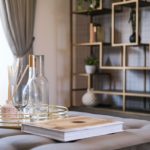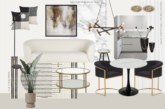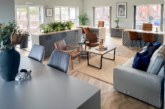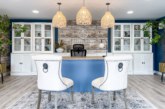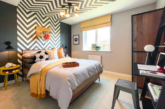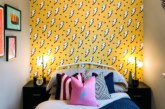Andy Richardson, managing director of interior design specialists Edward Thomas Interiors, discusses the current priorities and trends for new homes as well as what luxury living actually means in today’s market…
There’s no denying the pandemic has forced us all to re-evaluate our homes; whether that’s undertaking small DIY tasks to adding extensions or making the decision to move. Our space has become paramount, an argument supported by data from Rightmove’s analysts which suggests houses and bungalows are now the most desirable property types, with apartments and flats on the decline due to lack of gardens, home offices and overall space. So, how does this translate in interior design and what should the definition of luxury look like today?
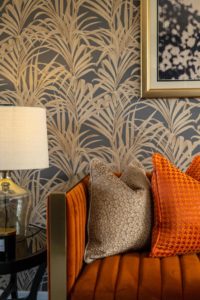 When designing a show home, we’re always looking at how best to showcase the space and versatility of a property to invoke feelings of aspiration and inspiration. Whilst these core principles haven’t disappeared, what’s of equal importance now is demonstrating how the home would actually be lived in. By highlighting storage space or placing key pieces of furniture like televisions in their natural position it helps homeowners understand. For instance, on a recent scheme we completed for Abbey Homes in Stoke Mandeville, Buckinghamshire each four-bedroom home was deliberately designed to be indicative of the style of well-known department stores or online retailers so potential purchasers could better imagine how their home might be furnished.
When designing a show home, we’re always looking at how best to showcase the space and versatility of a property to invoke feelings of aspiration and inspiration. Whilst these core principles haven’t disappeared, what’s of equal importance now is demonstrating how the home would actually be lived in. By highlighting storage space or placing key pieces of furniture like televisions in their natural position it helps homeowners understand. For instance, on a recent scheme we completed for Abbey Homes in Stoke Mandeville, Buckinghamshire each four-bedroom home was deliberately designed to be indicative of the style of well-known department stores or online retailers so potential purchasers could better imagine how their home might be furnished.
There’s also been a shift in which rooms are considered luxurious. Whilst kitchen/diners and master bedrooms will always provide sanctuary, rooms that were perhaps previously overlooked e.g. lounges, dens and studies must now be emphasised. At Littleover in Derbyshire, one of the schemes we’ve just finished for William Davis Homes, the four-bedroom home has a substantial study which we’ve been able to install with built-in cupboards, shelving, a large desk area and overhead storage – all priorities for the new way of working.
Of course, all of the above doesn’t mean we overlook the more traditional expectations of luxury, it’s about striking the right balance between style and substance. Textures, fabrics, colours and even the occasional statement piece such as a 6ft bed or home bar, enable us to achieve a sense of glamour. Actually at Littleover, our brief was to reflect the 1920s so we created a Gatsby, art deco inspired design full of decadence, velvet fabrics, vibrant banquette-style orange sofas and an antique gold and black colour palette.
From the housebuilder’s perspective, it’s essential a show home is both memorable and photographs strikingly for online and social media. You want it to capture the spirit of imagination, so we try to be playful with our designs too. At Stoke Mandeville, one of the children’s bedrooms has a flamingo slide from the top of the bed into a ball pond, the height of luxury for a young child!
Looking ahead, 2021 seems to follow a natural, sustainable theme; colours like ecru and clay, a material palette of bamboo, cane and rattan and perhaps more widespread use of upcycled furniture will all be popular. Our challenge will be making these punchy, dramatic and luxurious in their own right. By definition luxury might mean wealth and lavishness, but these times have shown that the little details and home comforts might just be the most luxurious after all.

